STEPS
TOOLS
This is the 1st "lesson" in the series I will publish to show how to draw figures, be they human or most types of animal, but actual drawing will be done next guide. This is still an important lesson.
Tap the pictures to see the whole image. This is important for such a visual activity as drawing.
{TOC} Intro...step 4. Anatomy and proportion...step 9. Homologous structures... Step 14. Importance of Anatomy and proportion in art... Step 20.
In art, a figure is "a representation, pictorial or sculptured, especially of the human form" (Dictionary.com). For us it is a drawing of a human or animal.
Figures are among the hardest things to draw because they are not very geometric like books or buildings. But with practice, learning to draw them will enhance your artwork and become a great skill.
Drawing figures is easiest and most accurate when you first draw a rough skeleton of the figure. For the most part, these skeletons are very similar.

Many artists study anatomy to better understand how to draw humans and animals. The best realistic or classical artists, like Da Vinci, pay careful attention to how everything is shaped and connected.

Even Picasso first studied the classical human figure drawing method before he made the paintings he is famous for.
You don't need to know the names of every bone, but it is important that you have a general idea of what it looks like and a firm grasp of its proportion to the others and the whole.
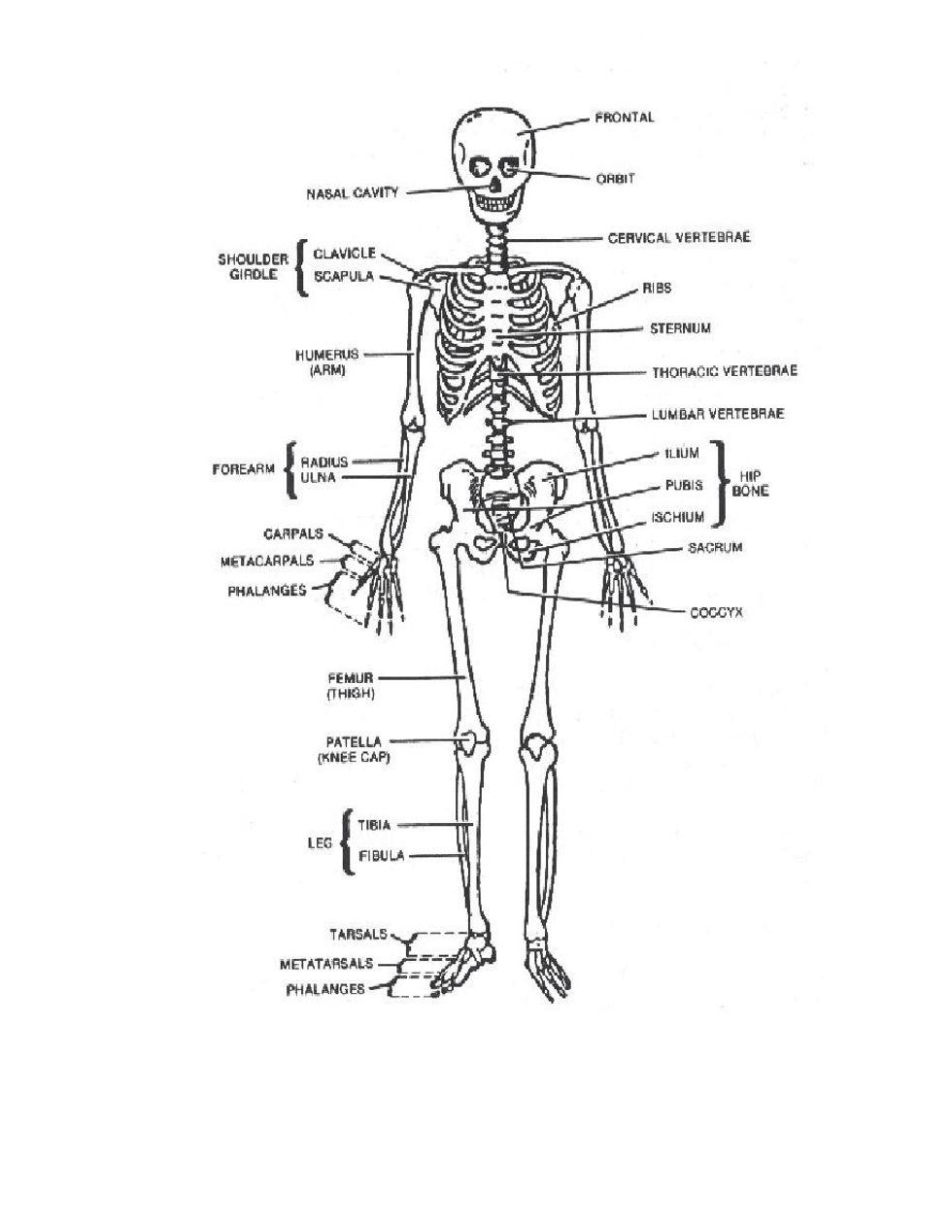
The legs take almost 1/2 of the body's length. The wrists end just below the hips. The rib cage is a little more than 1/2 the torso (the shoulders to the tailbone). The hips are 2/3 of the ribs mass.
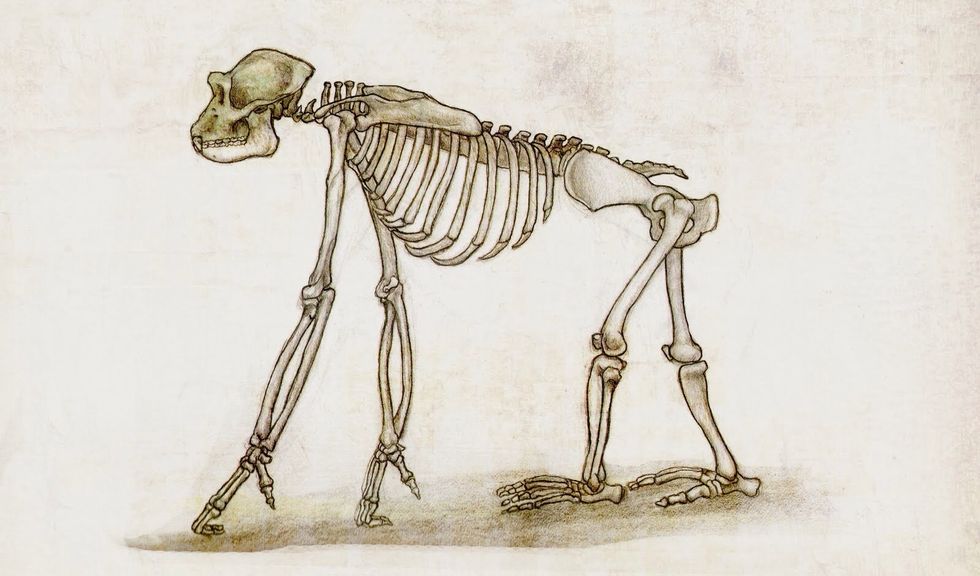
Here is a gorilla's skeleton. It is very similar to a human's although its legs are shorter and there is less space between the ribs and the hips. Humans have special hips that allow us to stand up.

Horses also have similar skeletal structure, though they've even more different proportions. Elbows and knees are very close to the body while heels & wrists are 1/2way down the leg. Hooves are nails.
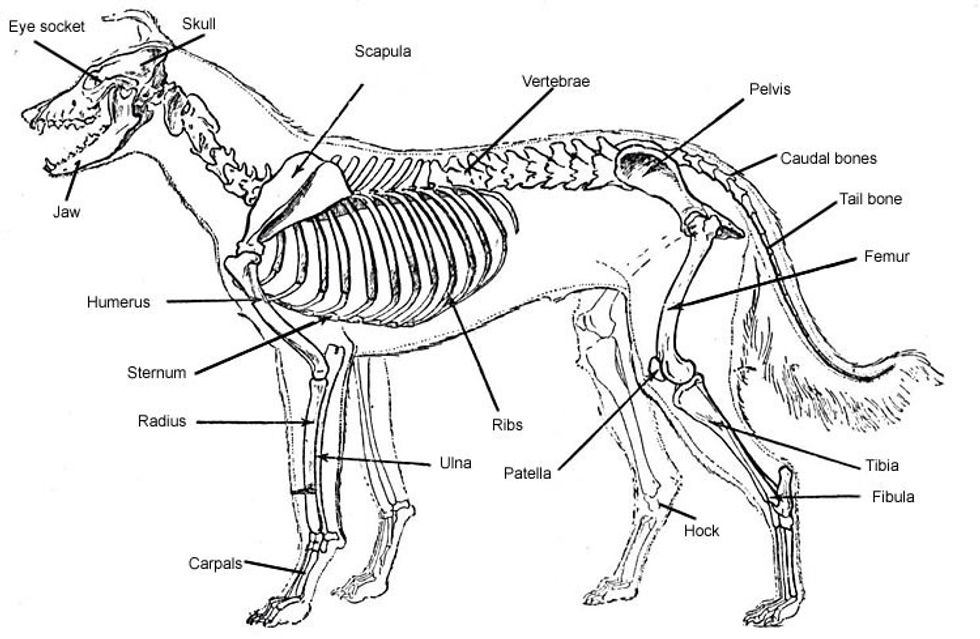
Horses and dogs are evolutionarily related. Toe bones make paws while the spine lengthens into the tail.
"According to Scientists, early land animals were amphibians (like frogs and salamanders) and possessed a bone structure called the pentadactyl limb: a limb with five fingers or toes.
All animals that descended from these early amphibians, including reptiles, birds and mammals, have bones that have evolved from this same basic pattern."
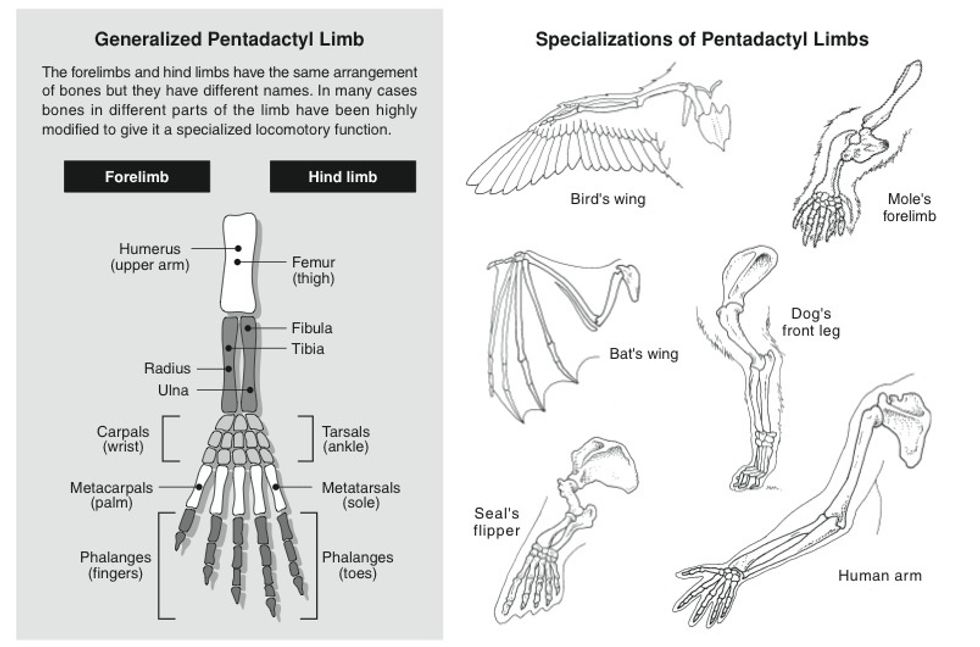
From http://pd.scisdragons.net/grade8science/2011/11/23/comparative-anatomy-homology/
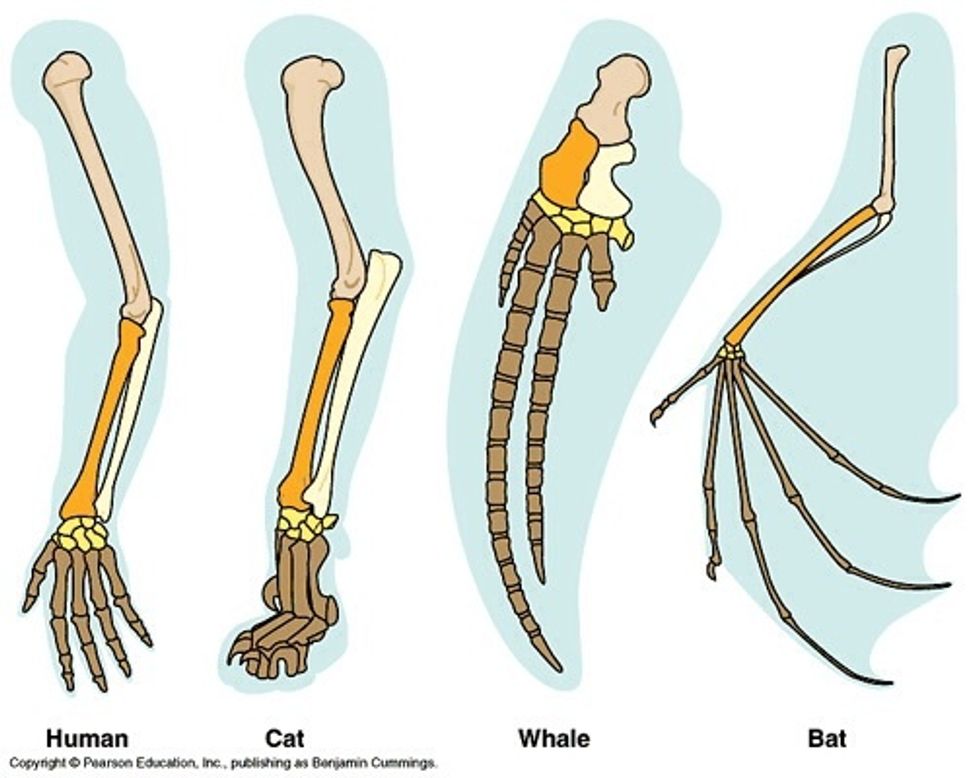
Each color represents the same bone structure in the different animals, whether they fly, swim or walk.
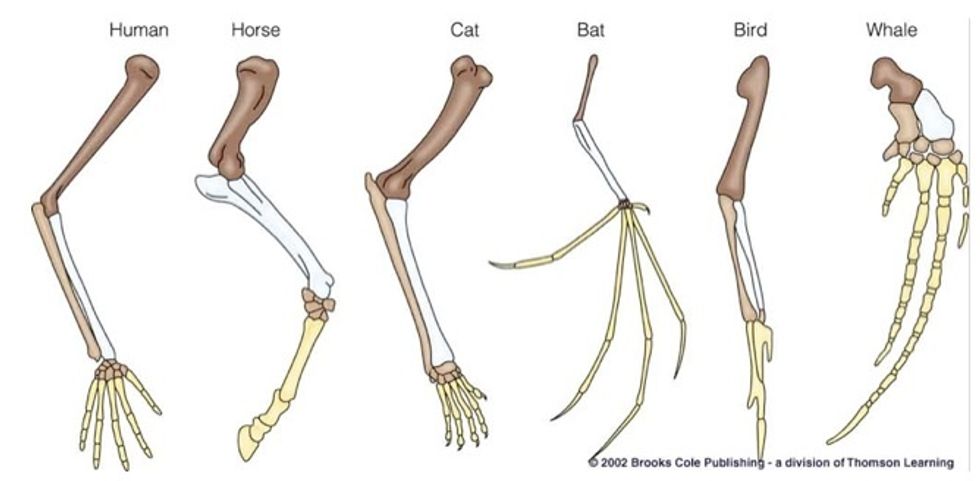
As you can see, each arm (and animal) has the same bones. This makes it easy to break down the structure of birds, reptiles, and mammals, a good percent of the figures around us in our everyday lives.

I consider the human skeleton the most important to familiarize yourself with because we instinctually know when it's "off", and are around others a lot. Human figures are a popular subject in art.

These real-life proportions and anatomical structures are used...
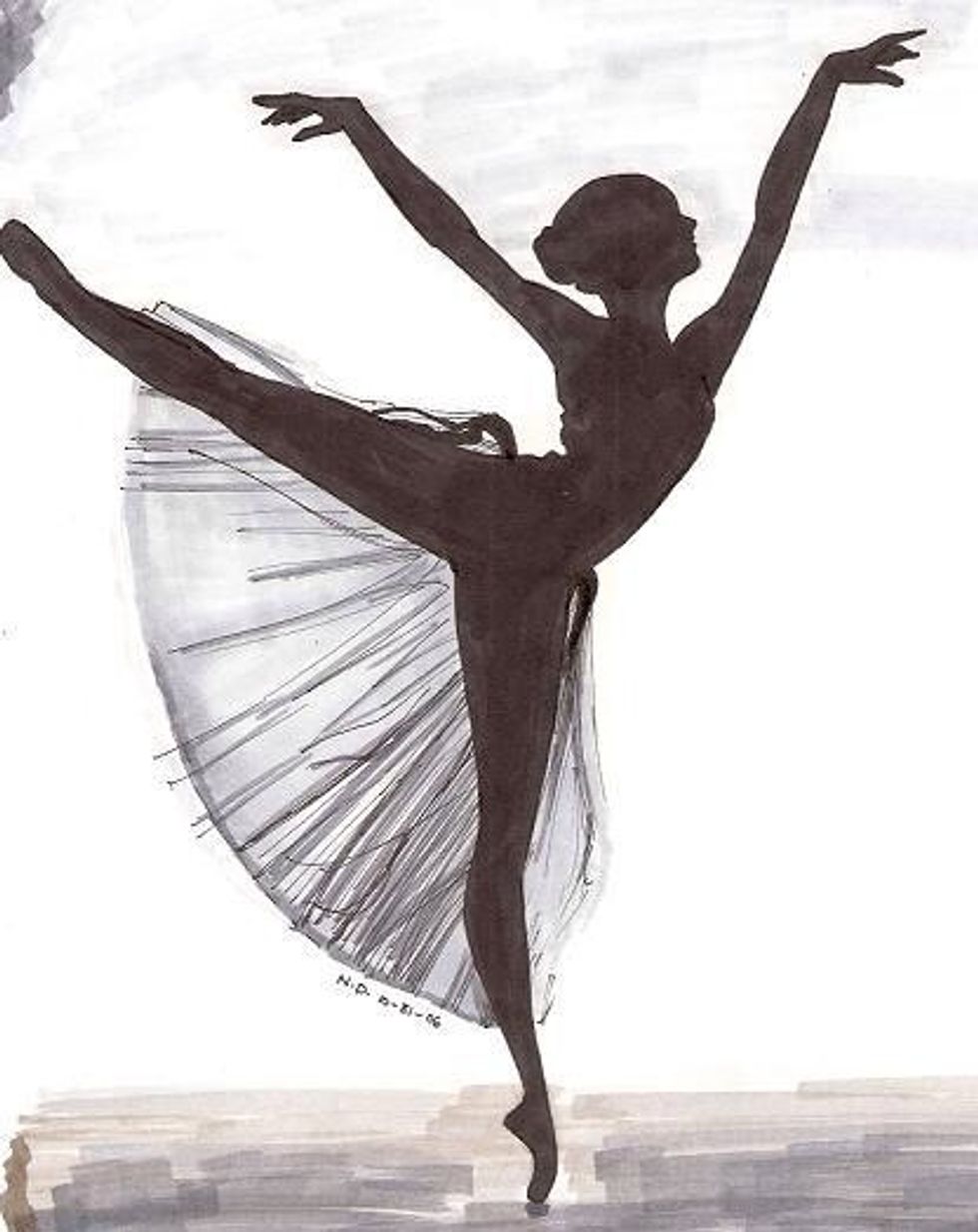
... whether the artist uses watercolor...
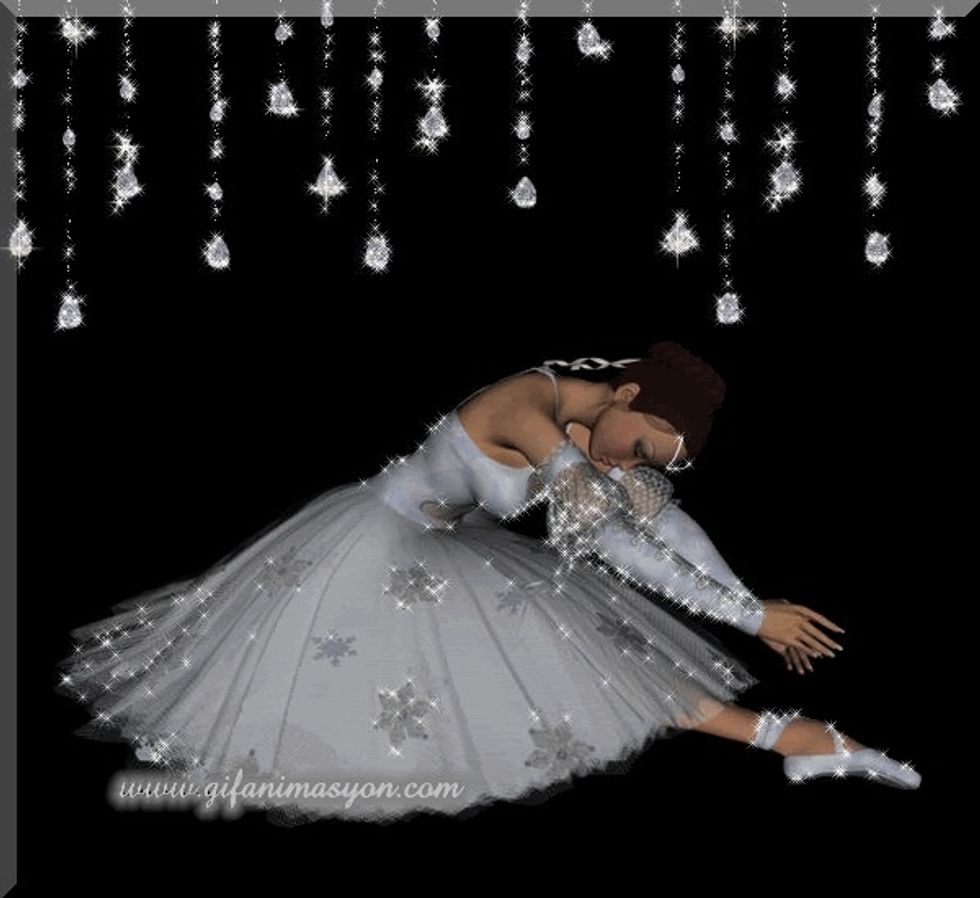
...Computer Graphics Animation...

...anime...
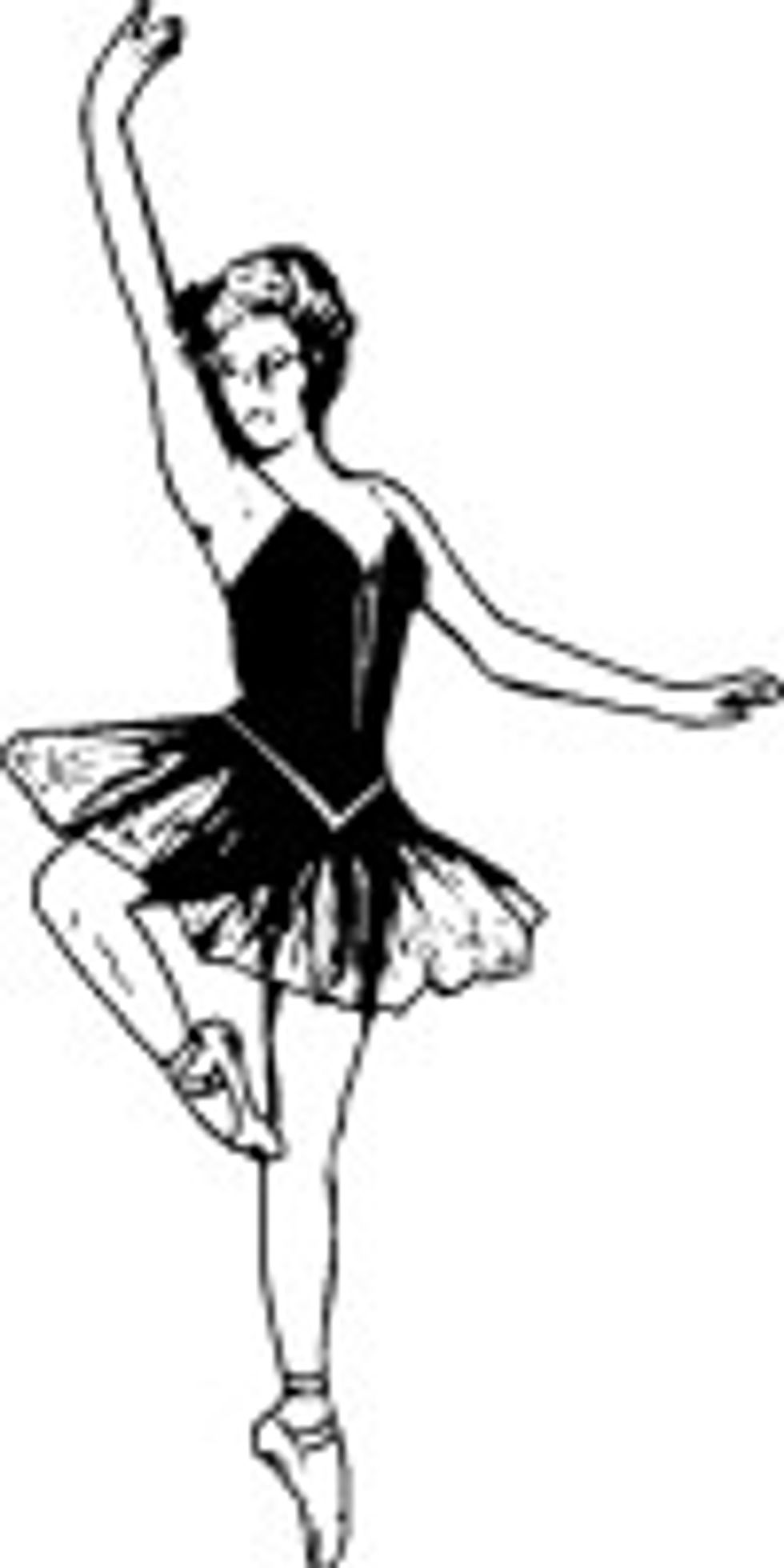
... or paper and ink, or any other medium, and ...
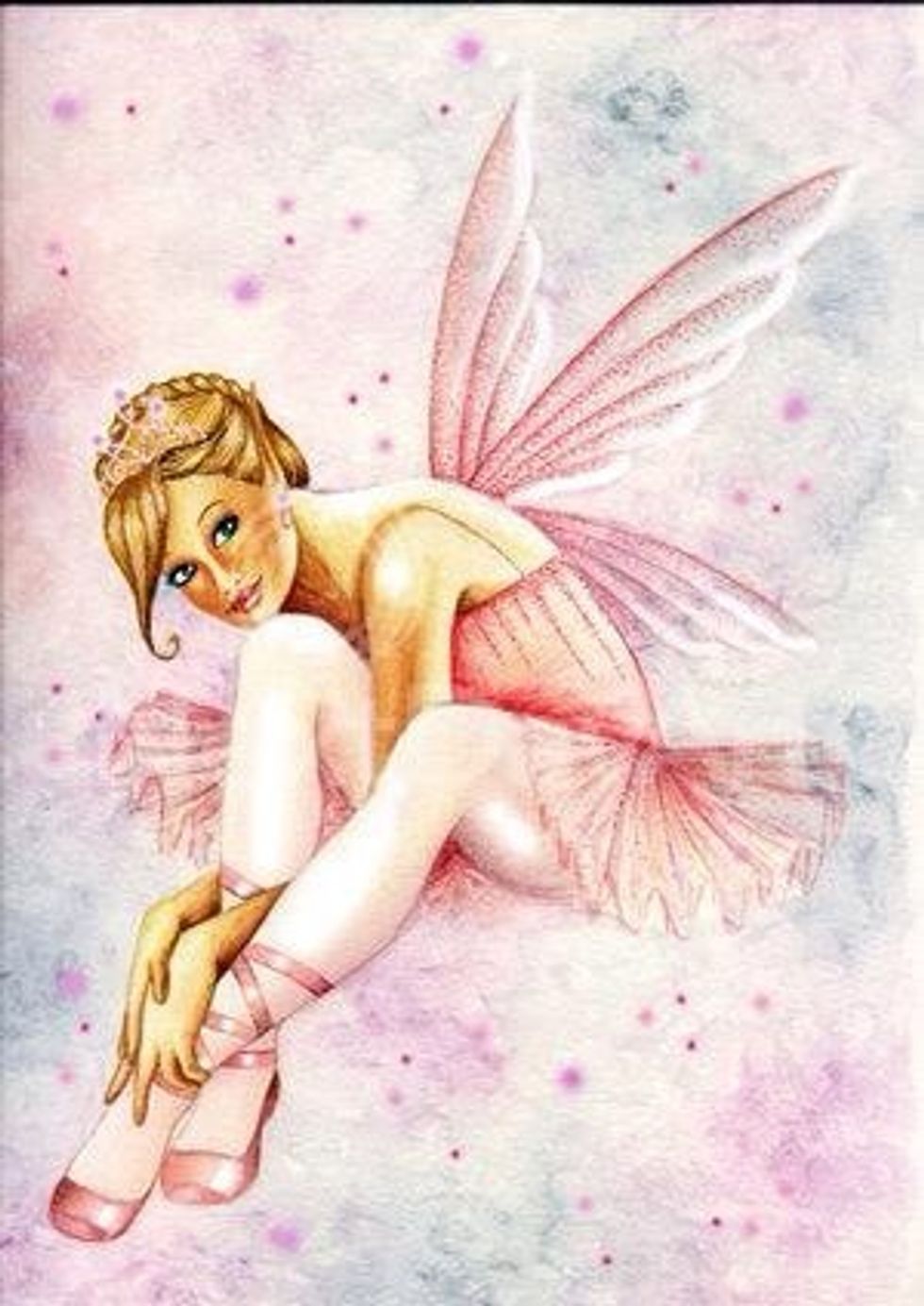
...in fantastical works...

...with foreshortening and perspective ...
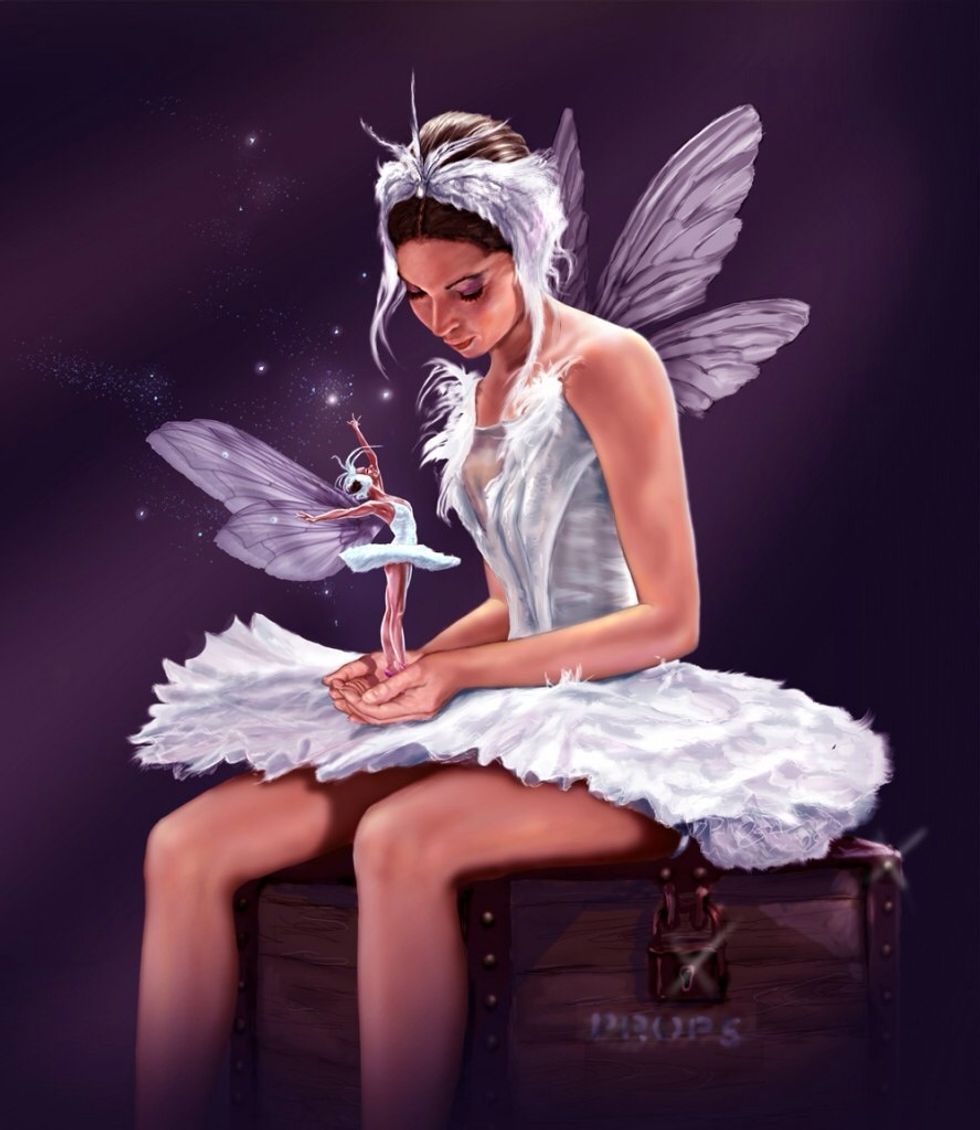
... with proportion of the whole...
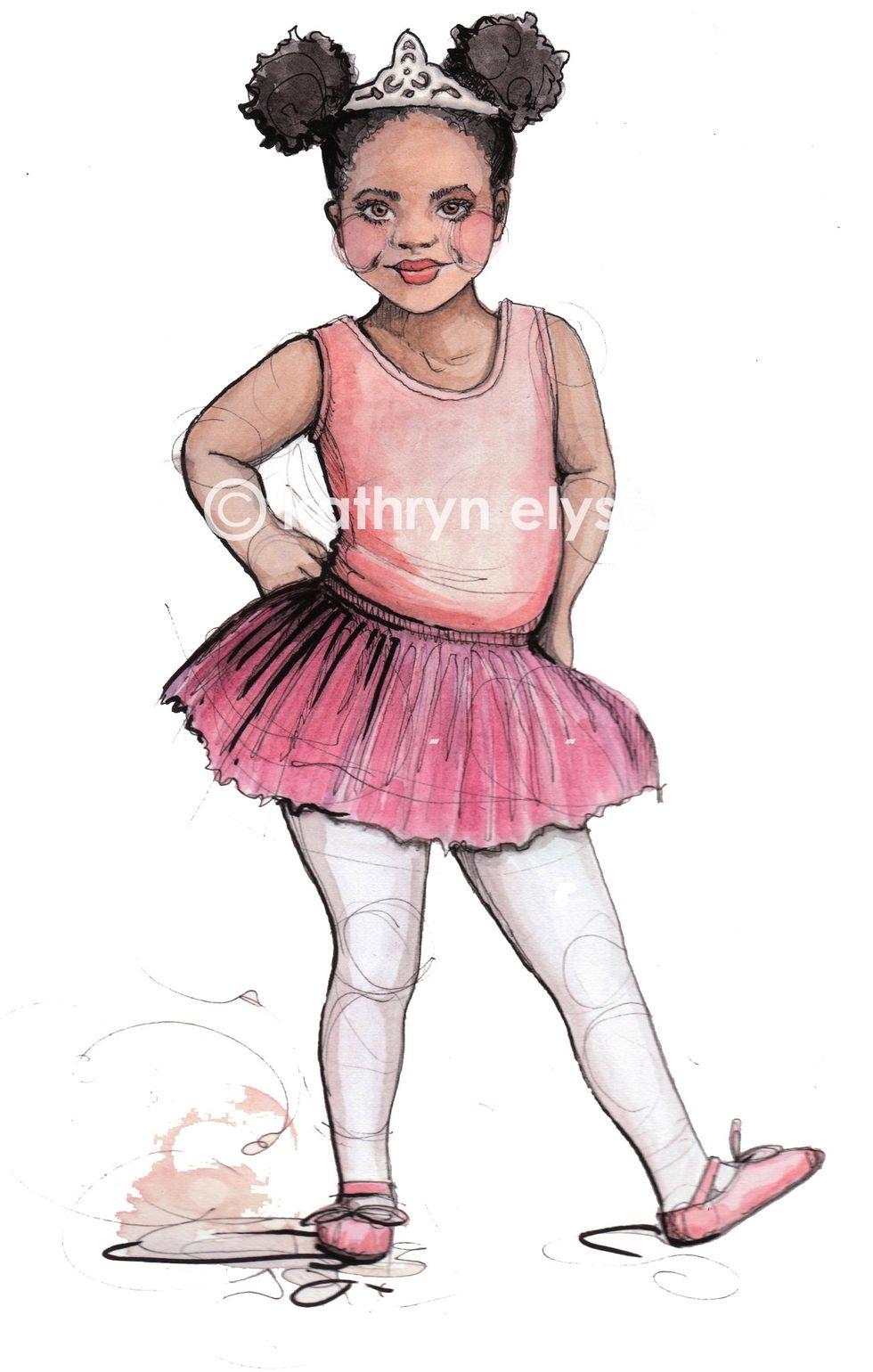
... and changed to suit the figure represented.
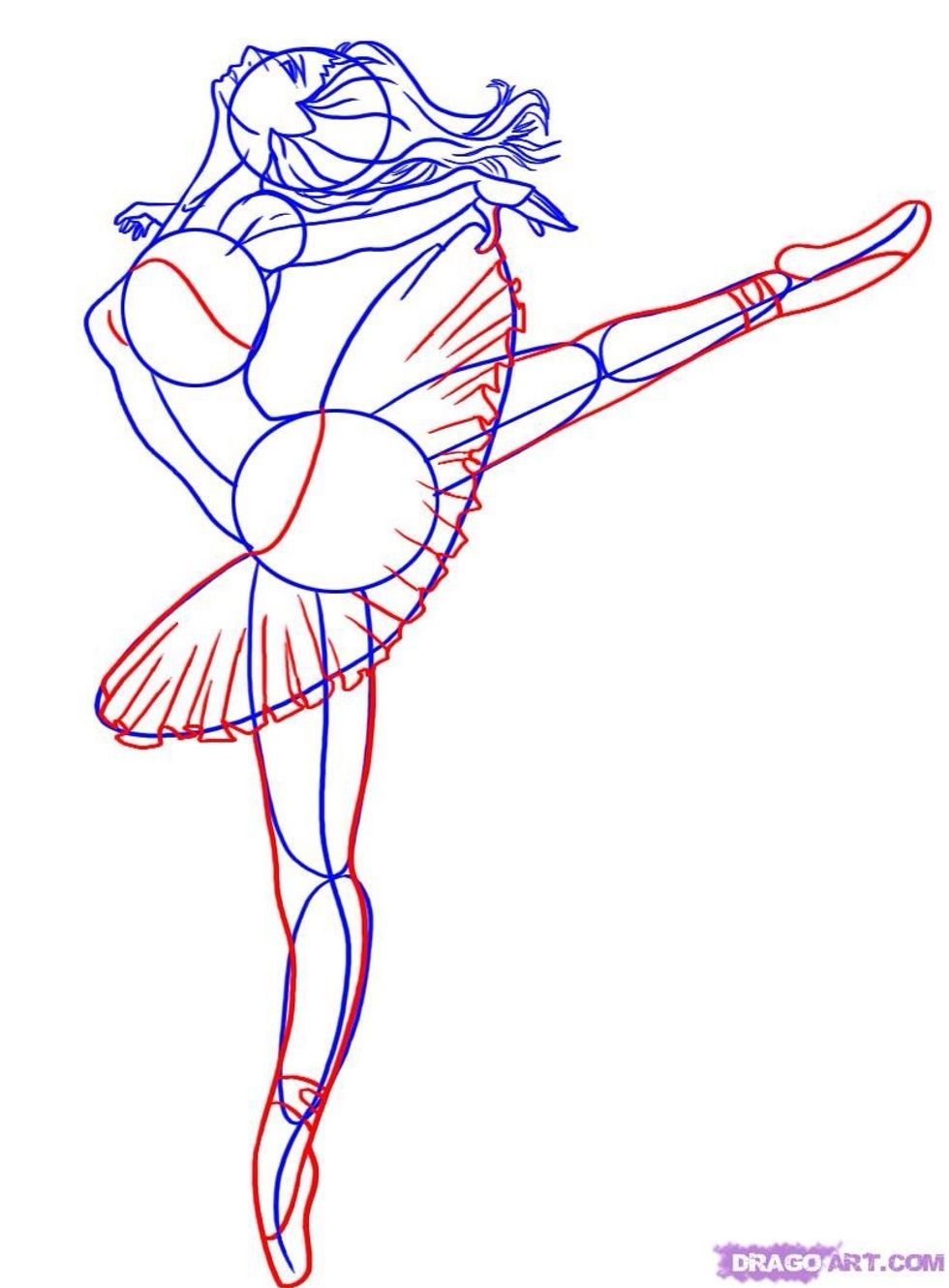
Anatomy and proportion is the basis of any depiction of any animal or human using any medium.
It is therefore essential to study these real proportions to make your drawings more accurate and realistic.
In my next guide I will show you how to draw the human figure using the anatomy and proportions highlighted in this guide.
All images were from the Internet. More anatomical structures can be found online and at your local library or bookstore.
The creator of this guide has not included tools
The Conversation (0)
Sign Up